July 2007 | home thanetonline.com michaelsbookshop.com Click here for books about The Isle of Thanet Dangerous cliff ?
this link takes you to the rest of my Pleasurama site this link takes you to my previous correspondence
July 2007 | Thanet District Council press release | Pleasurama update 6/6/2007 another years delay! | The temporary railings | Ramsgate | latest news | heads embedded in the concrete | Simon Moores Thanet life | Michael Child | Latest views | Details from the latest plans | Pictures 2007 | April 2007 | April replies | Replies to my email about the new introduction January 2007 | David Green | pleasurama update | Seafront site ready for rejuvenation | Companies House Search | correspondence | prompt replies | Action | Riddles | Committee | more | Follow up | councillors | councillors revised | spam your councillors | Councillors responses | Economical with the truth | The Member Portal | Taking the member out of the portal | Ken Gregory | Gerry O'Donnell | survey | May 2007 | Cracks over the voids | Engineers report on the condition of the cliff | more report | election results
My attempts learn about the Pleasurama project have lead me into a dialogue with Thanet District Council about their website and the way they pass on correspondence to councillors. Click on the links above to read the correspondence.
Pictures 2007
We had a fairly stormy winter in Ramsgate this year fortunately none of the storms combined with a tidal surge so there was little damage on the area of the old Pleasurama site.
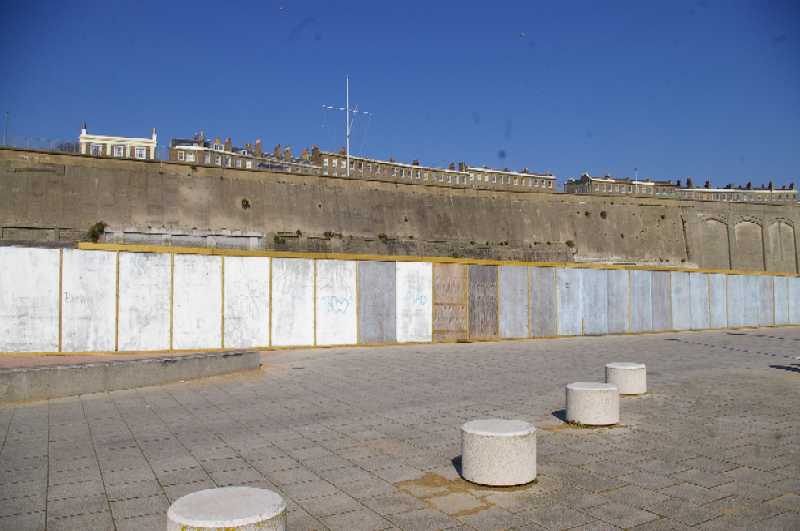
You can see from the picture where the boards round the site have been replaced after the storms took them away.
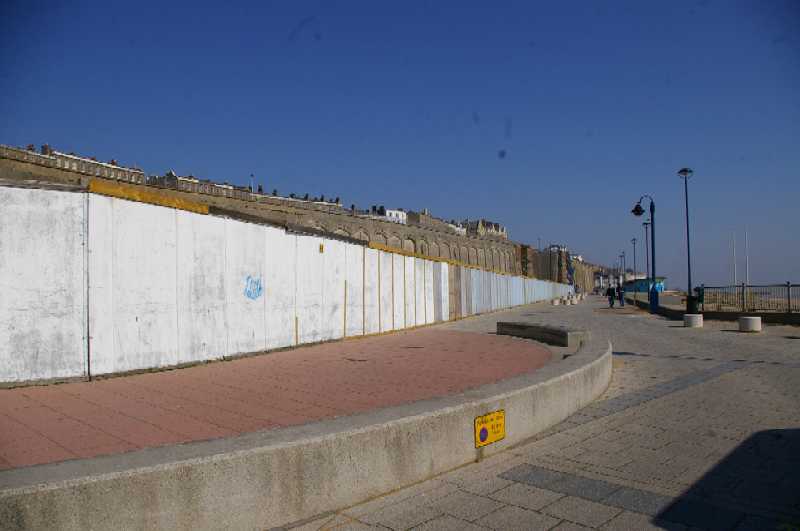
This is the curved bit shown in section BB
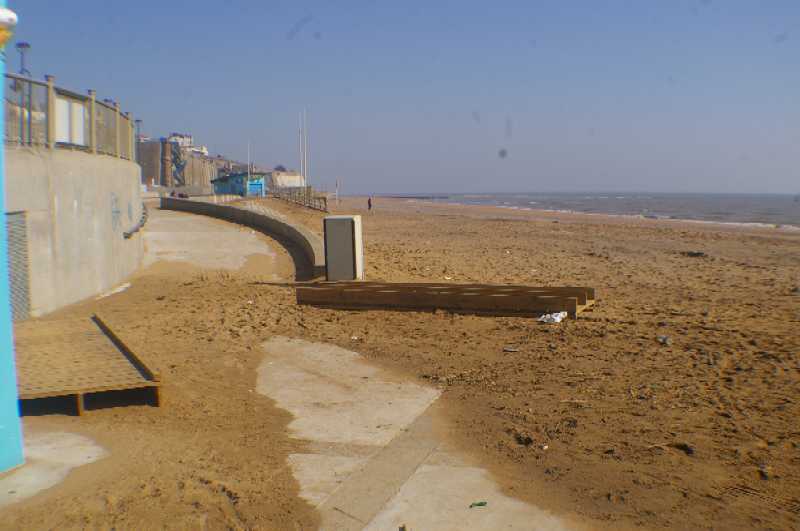
Sadly we lost a lot of the sand from the beach in the winter storms. This is part of the wheelchair access across the beach.
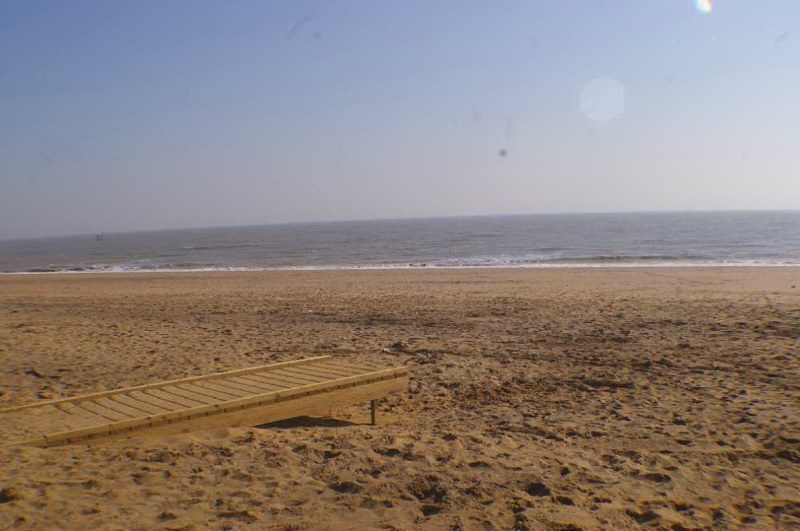
As you can see we won't be needing it for this summer.
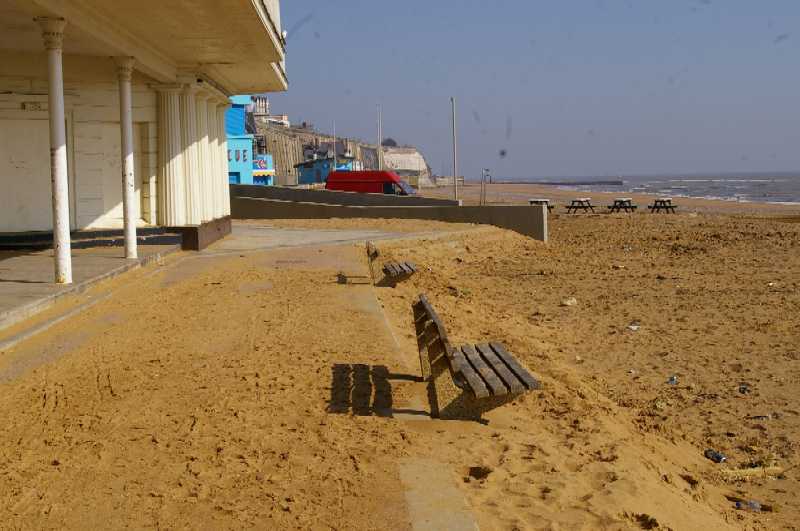
You can see from the sand and debris that the pavilion gets uncomfortably close to the storms.
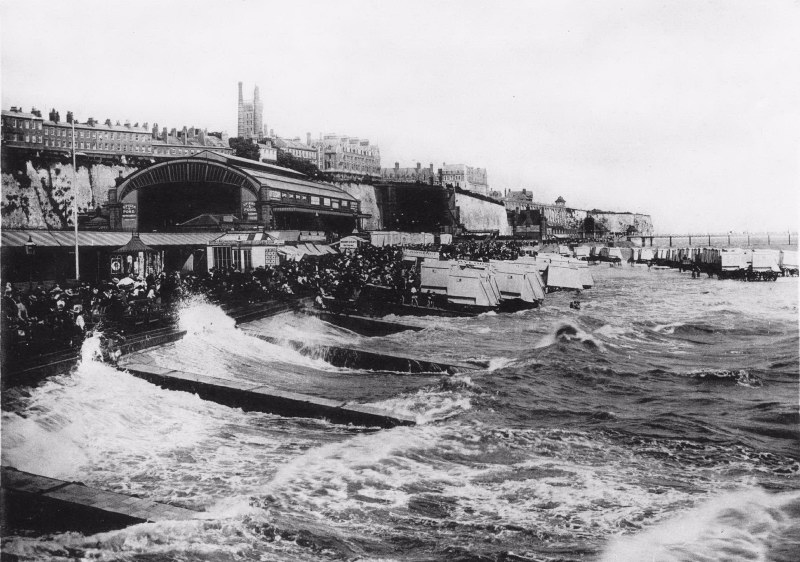
In this picture of the early 1880s you can see on the left part of the Colonnade that extended as far as the gates in pier yard, which was demolished by a storm in 1897 and was replaced by the Royal Pavilion in 1904.
This account of the great storm of 1897 from Keble's Margate and Ramsgate Gazette says it all really, the red brick wall mentioned was where and at about the same height as the east end of the proposed building is supposed to be built.
At Ramsgate the gale was not felt with such force as at Margate and other places along the coast, and the tempest lasted, in its worst form, an hour and a half or two hours at the most; or, rather, the bulk of the damage done was confined to that period. The East Pier, which had stood the stress of many winters, was on this occasion considerably damaged. About a quarter to three, when mountainous waves had broken against it for some time, a serious breach was made-about 100ft. in length of the stonework being washed out of position. Huge blocks of granite, weighing several tons, were hurled with extraordinary violence into the harbour; others fell into the water and buried themselves in the sands. The extreme force of the waves can be easily imagined when it is stated that three courses of stonework, the parapet, the base stone, and the half-round moulding succumbed almost simultaneously to the fury of the gale. Several of the large stones forming the paving of the pier were wrenched out of place. Between the inner and outer walls, the material not having the solidity of the remaining portions, as each successive wave swiftly and noisily broke over it, tons of stone and other material were hurled to and fro. But the greatest attention was directed to the colonnade, over which enormous waves broke with tremendous force, reducing almost the entire structure to the ground level. The colonnade was erected some twenty-four years ago. The small shops at each end were totally destroyed, and a great proportion of the wooden material was forced through the rear of the colonnade into the stoneyard. Of the colonnade, all that remained was a few posts and some portions of the iron roofing.
The Esplanade practically escaped scot free, but about 70ft. or 80ft. of the red brick wall at the east end, belonging to the L.C. & D. Railway Co., was demolished together with a portion of the wood fencing separating the railway sidling from the Marina-road. Great falls or the cliff took place between Ramsgate and Dumpton Gap and beneath East Cliff Lodge heavy landslips occurred.
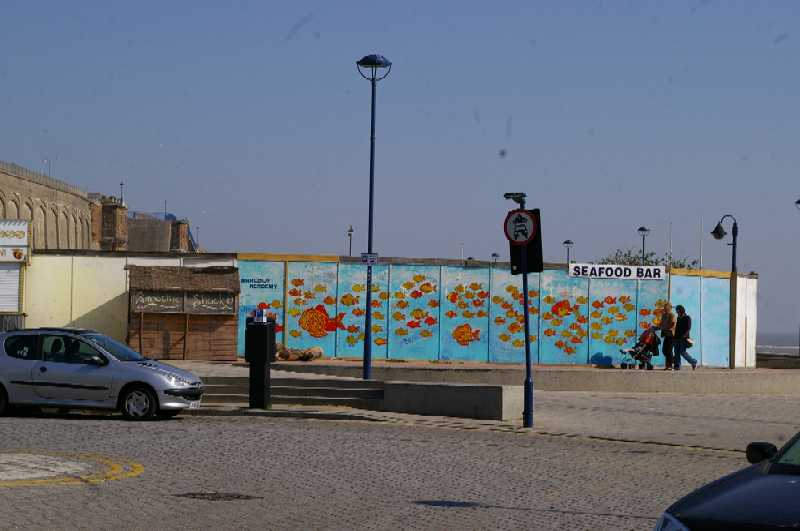
Most of the fish mural was salvaged and as you see the top of the boarding has now been strengthened.
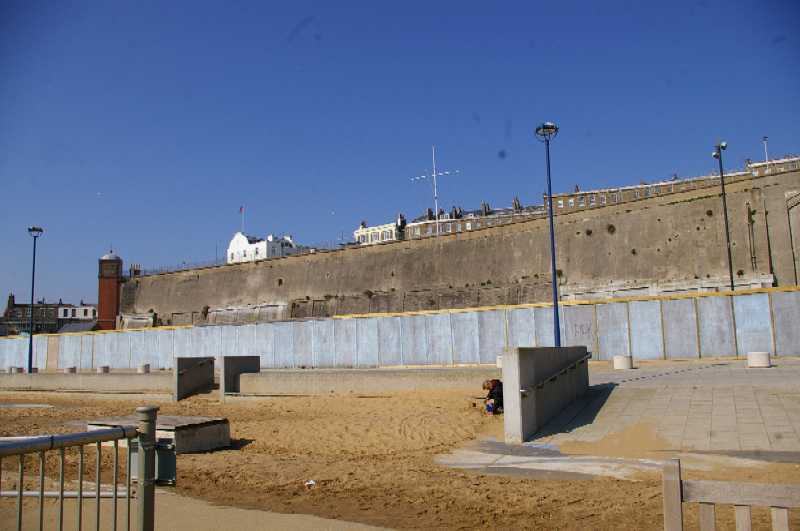
This is the promenade not the beach.